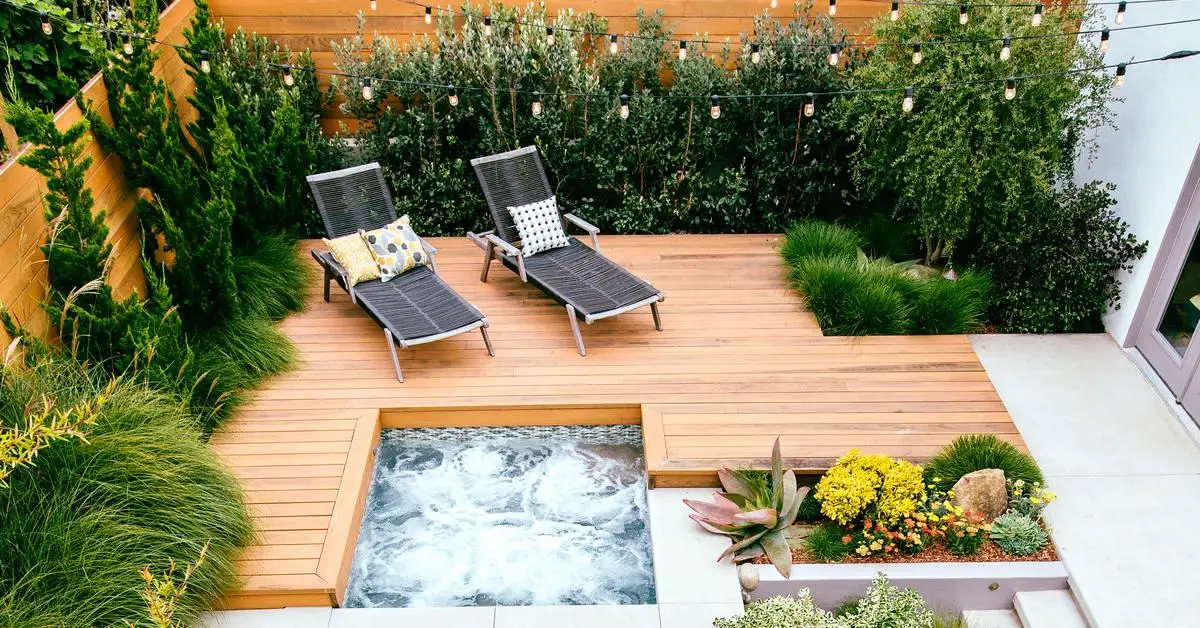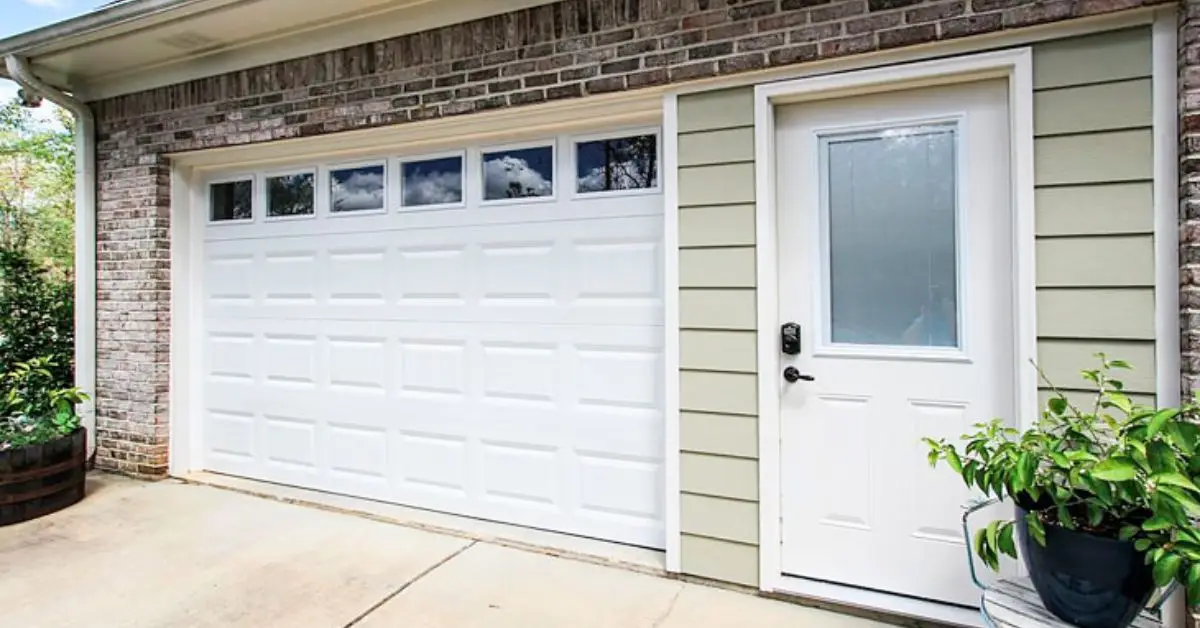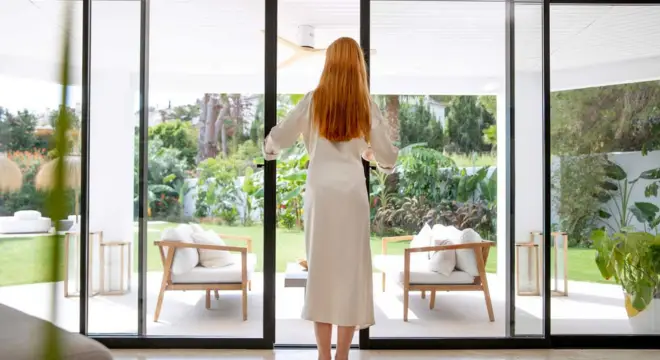Stop Wasting Money: 11 Home Upgrades That Hurt Resale Value
We’ve all had that moment—standing in a hardware store, Pinterest open on your phone, thinking maybe this is the upgrade my home needs. I’ve been there too. But here’s the truth most renovation blogs and DIY influencers won’t tell you: a lot of “popular” home upgrades don’t just waste your money—they can actually hurt your home’s resale value.
It sounds unfair, right? You spend thousands on what feels like an improvement—new tile, a walk-in closet, or maybe that dream media room—and then your real estate agent quietly tells you, “Actually, buyers don’t really care about that.” Sometimes, they’ll even see it as a negative.
If you’re upgrading your home because you love it and plan to stay long-term, that’s one thing. But if you’re doing it with resale in mind—thinking about selling, refinancing, or simply building equity—you need to know which renovations truly pay off, and which ones just drain your budget.
This article is about avoiding those traps. Backed by real data from places like Zillow, Redfin, and even homeowner stories from Reddit, I’m breaking down 11 common renovations that feel smart—but actually add zero value or worse.
Before you knock down a wall or pour money into trendy features, take a step back. Some of these might surprise you. And at the end, I’ll also walk you through better, more cost-effective upgrades that buyers do value.
Let’s start with the first one that shows up on almost every list—but not for the reason you think.
Buyer Psychology & Market Trends
Before we get into the specific upgrades, you need to understand something most homeowners overlook: what buyers actually care about is very different from what feels exciting to upgrade.

Many renovations that seem like obvious improvements—like a sleek white kitchen or a custom walk-in closet—can actually backfire, simply because they don’t align with how buyers think. The mistake most homeowners make is upgrading for themselves, not for the market.
Let’s break that down.
Trends Fade, Preferences Shift
A few years ago, everyone wanted a bright all-white kitchen. It felt clean, modern, expensive. But according to a Zillow study, homes with all-white kitchens actually sold for $612 less than expected on average. Why? Buyers now prefer darker or more natural tones—colors that feel warmer, more livable, less like a showroom.
This is a pattern across multiple upgrades. What feels “premium” today can look dated just a few years from now. And if the upgrade feels too personalized or trendy, buyers start seeing it as a cost to reverse, not a feature to enjoy.
The Value of Function Over Flash
Another factor most people miss: buyers aren’t always looking for the wow factor. They want homes that feel practical, low-maintenance, and adaptable. That oversized spa bathroom with gold fixtures might impress on Instagram—but in reality, many buyers would trade it for an extra closet or more floor space.
In fact, Zillow’s research found that even small functional changes—like keeping a garage intact or choosing neutral paint colors—often result in more resale value than large-scale cosmetic upgrades.
Real Buyers, Real Behavior
And this isn’t just theory. On Reddit, homeowners who’ve gone through selling their houses talk constantly about what actually moved buyers: clean finishes, decluttered spaces, good lighting, basic repairs. Not one of them said, “I was so glad we spent $15k on that stone accent wall.”
Understanding buyer psychology isn’t just helpful—it’s critical. Without it, you’re designing your home for your own preferences, not for the person who might someday pay you hundreds of thousands to live there.
That’s where most people go wrong. And that’s why the next section matters—because these 11 common upgrades? Most of them are rooted in trends, not long-term value.
11 Home Upgrades That Waste Your Money
Here’s the truth: just because something looks nice or feels luxurious doesn’t mean it adds value. In fact, many upgrades can turn buyers off, limit your resale potential, or simply give you a terrible return on investment. Let’s walk through the top 11 mistakes homeowners make—and why they don’t pay off.
1. All-White Kitchens
They used to be the holy grail of modern design. But now? Buyers are pulling away. Zillow found that homes with all-white kitchens sold for $612 less than expected. Stark, sterile designs are being replaced with warmer neutrals, earth tones, and wood accents.
Why it doesn’t work: Trends change quickly, and white kitchens are starting to feel cold, not timeless. What looks sleek today may feel outdated by the time you sell. Want to avoid kitchen trends that hurt your budget and value? Avoid these 6 kitchen renovation mistakes that’ll destroy your budget (and how to fix them).
2. Sacrificing a Bedroom for a Walk-In Closet
Turning a small bedroom into a giant closet might feel like a luxury move—but it’s risky. In most markets, the number of bedrooms directly impacts home value. Fewer bedrooms = fewer potential buyers.
Why it doesn’t work: You’re reducing your home’s core utility for something that only appeals to a niche group of buyers. Most would rather add closet organizers than lose a full room.
3. Adding a Deck or Expanding the Patio
Outdoor living space sounds great, especially for entertaining. But the return on investment? Often disappointing. According to Remodeling Magazine, the average deck recoups only 65–70% of its cost.

Why it doesn’t work: Materials weather fast, maintenance is high, and many buyers don’t see a deck as essential—especially if it eats up yard space.
4. Converting the Garage into Living Space
A home gym, studio, or bonus room sounds appealing—but removing a garage often backfires. Zillow’s data shows that homes with garages sell for $2,800 more on average than those without.
Why it doesn’t work: Garages are practical. Most buyers need the storage or parking. Lose that, and you lose flexibility—especially in urban or cold-weather markets.
5. Installing a Pool or Hot Tub
This is one of the biggest renovation myths. A pool seems luxurious, but for many buyers, it signals more cost, more maintenance, and more liability. In some markets, it even reduces value.
Why it doesn’t work: Unless you live in a warm-weather area where pools are the norm, most buyers won’t see it as a benefit. They’ll see higher insurance and upkeep bills.
6. Over-the-Top Bathroom Remodels
Fancy tile, heated floors, gold fixtures—it looks good in photos, but it rarely pays off. Luxury bathroom remodels often return only 30–40% of their cost.
Why it doesn’t work: Bathrooms are essential, but buyers prioritize cleanliness and function over high-end finishes. Go neutral, clean, and classic instead.
7. Wall-to-Wall Carpeting
Buyers are moving away from carpet—especially in high-traffic areas. Even if it’s new, many see it as outdated or hard to maintain. Zillow notes that homes with laminate or carpet flooring sell for slightly less than expected.
Why it doesn’t work: Carpet traps allergens, stains easily, and feels dated compared to wood, tile, or vinyl plank flooring.
8. Laminate Countertops
No matter how clean or new they are, laminate counters send a clear message: budget finish. Today’s buyers expect granite, quartz, or solid-surface options—even in modest homes.
Why it doesn’t work: Laminate is seen as low-end and doesn’t hold up well over time. It can hurt first impressions, especially in the kitchen.
9. Bold Wallpaper or Unique Textures
That deep jungle print or metallic accent wall might reflect your personality—but buyers don’t want to inherit your taste. Bold design choices are one of the top turn-offs during showings.
Why it doesn’t work: Buyers see bold wallpaper as work—something they’ll have to remove. Neutrals sell better, always.
10. Custom Themed Rooms (Theater, Bar, Gym)
A movie room with surround sound or a full basement bar might feel impressive, but most buyers won’t use it—and they’ll mentally add the cost of converting it back.
Why it doesn’t work: These upgrades are too specific. They reduce flexibility and make buyers feel boxed in. The space becomes harder to imagine as their own.
11. DIY Renovations That Look DIY
Doing it yourself might save money—but only if you do it right. Crooked tile, uneven flooring, sloppy paint jobs—buyers notice, and it raises red flags about what else might be wrong.

Hooked Home
Why it doesn’t work: A bad finish can kill a buyer’s trust. Even one poorly done project can cast doubt on the entire house.
Each of these upgrades might feel like you’re adding value—but the data, and buyer behavior, says otherwise. Up next, we’ll talk about the real reasons these projects fail and the hidden factors most people never consider when renovating.
What Most Articles Miss About Home Renovations
If you’ve read a few listicles on “renovations to avoid,” you’ve probably seen the same points repeated over and over. Pools are risky. White kitchens don’t always work. But almost none of these articles explain why these upgrades fail—or how to make smarter decisions.
Here’s what’s usually missing from the conversation:
1. Local Market Rules Everything
A pool might hurt resale value in Chicago, but in Phoenix, it can boost it. Converting a garage in a suburb? Risky. But in a dense urban area with no street parking, that might actually make sense.
Most of the big content sites make blanket statements, but value is hyperlocal. The same upgrade can be smart in one ZIP code and a money pit in another.
If you’re unsure what works in your area, talk to a local agent—not the internet.
2. Permits and Paper Trails Matter More Than Style
Renovating without permits? That can kill a deal during inspection or appraisals. Even high-quality work becomes a liability if it isn’t properly documented.
This gets almost zero attention in most “don’t upgrade this” articles—but it’s critical. As Investopedia explains, buyers (and lenders) get nervous when they see major work done off the books. It makes them wonder what else was skipped.
3. Maintenance is a Dealbreaker
Buyers aren’t just looking at how a home looks. They’re thinking about how much work it’s going to be to maintain.
That perfectly manicured garden? It screams weekend labor. That custom media room? Looks great, but feels like a future headache. These projects may be functional, but if they require upkeep or specialized care, buyers start mentally checking out.
4. Flexibility Beats Flash
Renovation ROI often comes down to one question: Can a future buyer imagine using this space in multiple ways?
A simple guest room can be an office, a nursery, a teenager’s bedroom. But a wall-to-wall closet with a chandelier? That’s one thing only.
Flashy upgrades limit future use. And in real estate, anything that narrows the buyer pool lowers the potential value.
5. The Cost of Reversing a Bad Upgrade
Here’s the part no one talks about: if a buyer hates your upgrade, they’re not just indifferent—they’re actively subtracting value in their head.
A $10,000 pool they don’t want is a $10,000 removal project. A wine cellar they’ll never use is a renovation cost. Every unnecessary feature creates a hidden cost-to-correct, and that’s where your price takes a hit.
This is what separates a surface-level renovation list from a smarter, more useful guide. When you start thinking beyond appearances—into cost, use, legal risk, and buyer psychology—you stop making guesses and start protecting your investment.
Ready to find out what to do instead? That’s what we’ll cover next.
Smart Alternatives That Add Real Value
So what should you actually do if you’re planning to upgrade your home?
The answer isn’t “do nothing.” It’s to be strategic. The best upgrades aren’t the flashiest—they’re the ones that improve function, save money over time, or make your home easier to sell.
Here are some changes that consistently deliver value:
1. Neutral Paint and Basic Repairs
It’s not glamorous, but it works. A fresh coat of paint in warm, neutral tones can completely change how a room feels—without alienating buyers.
The same goes for simple repairs: fixing cracks, squeaky doors, leaky faucets, or patchy drywall. These don’t show up in listing photos, but buyers notice them the second they walk in.
Why it works: These updates signal that the home is well cared for, which builds trust. They also make the space feel move-in ready.
2. Replace the Front Door or Garage Door
It sounds minor, but according to Remodeling Magazine’s Cost vs. Value report, replacing your front door or garage door is one of the highest-ROI upgrades you can make. They often return over 90% of their cost at resale.

Why it works: It boosts curb appeal instantly—something buyers care about before they even step inside.
3. Improve Energy Efficiency
Simple upgrades like adding attic insulation, sealing air leaks, or replacing old windows can make a big difference in utility bills. And buyers are starting to pay attention. For small seasonal upgrades that help beat the heat and save energy, check out these 10 easy home renovation projects for summer.
Why it works: Energy-efficient homes feel modern and responsible. Plus, buyers see long-term savings, which makes your home more attractive.
4. Focus on the Kitchen—Without Overdoing It
Instead of a full remodel, make small changes: replace cabinet hardware, upgrade lighting, swap in a new faucet, or repaint tired cabinets.
Why it works: Buyers care about kitchens, but you don’t need to gut the room to make it shine. Small updates give a “new kitchen” feel without the price tag.
5. Declutter and Stage the Space
Sometimes, the best thing you can do is subtract. Clean surfaces, open space, and well-placed furniture help buyers imagine living in your home—not being stuck in someone else’s design choices.
This comes up over and over again on Reddit, where real sellers say the biggest feedback they got was about how “clean and simple” their homes felt. Not how expensive their upgrades were.
Why it works: Clean, staged homes photograph better, show better, and sell faster. It costs next to nothing and has one of the highest impacts.
The goal isn’t to spend more—it’s to spend smarter. These kinds of upgrades don’t just protect your money; they make your home more appealing to more people. And that’s what actually drives value.
Next, we’ll bring in some real homeowner voices—because numbers are great, but nothing beats hearing what actually worked in the real world.
Cost vs. Value – What Pays, What Doesn’t
When you’re planning renovations, the smartest move is to weigh cost against potential return. Some upgrades look impressive but bleed money when it’s time to sell. Others are barely noticeable—yet add thousands in resale value.
This quick table compares low-ROI projects (you’ll want to avoid) with high-ROI alternatives (you should consider instead), based on national averages from trusted sources like Remodeling Magazine and Zillow.
| Low ROI Upgrades | Avg. ROI | Why It Fails |
|---|---|---|
| In-ground swimming pool | 30–50% | High cost, high maintenance, not valued in many regions |
| Garage-to-living space conversion | <60% | Buyers prefer usable garages—hurts utility |
| Luxury bathroom remodel | 35–45% | Overpersonalized, not a selling point for most buyers |
| All-white kitchen overhaul | Negative ROI | Trends have shifted—buyers now prefer warmer tones |
| Custom media room or home theater | <50% | Too niche—limits flexibility and resale appeal |
| High ROI Upgrades | Avg. ROI | Why It Works |
|---|---|---|
| Garage door replacement | 93% | Boosts curb appeal instantly, universally useful |
| Front door replacement (steel) | 90%+ | Low cost, high visual impact, secure and appealing |
| Minor kitchen facelift | 70–80% | Cabinet paint, new hardware, updated fixtures = refreshed look |
| Attic insulation/top-up | 80%+ | Energy efficient, cost-saving, adds long-term comfort |
| Neutral interior painting | Up to 100% | Broad appeal, low cost, transforms a room’s feel instantly |
Takeaway: If you’re upgrading to enjoy your home, do what makes you happy. But if resale is even slightly in your future, this table gives you a clear roadmap: spend where it adds real, long-term value—not where it just looks impressive on day one.
Final Takeaways + Reader Checklist
If you take one thing away from this article, let it be this: just because something costs a lot doesn’t mean it adds value.
Most homeowners overestimate how much renovations will increase their home’s worth. And unfortunately, some of the most popular upgrades—white kitchens, walk-in closets, pools—often bring in less than you spent, or worse, turn buyers away.
That doesn’t mean you shouldn’t improve your space. It just means you should think like a buyer before you think like a designer.
Here’s a quick checklist you can use before starting any home project:
Renovation Reality Check – 6 Questions to Ask Yourself
- Would this appeal to 80% of future buyers? If not, think twice.
- Is it functional or just flashy? Flash wears off. Function lasts.
- Does it remove something buyers expect? Like a garage, bedroom, or closet? Big red flag.
- Will it require ongoing maintenance? High-maintenance = lower appeal.
- Is it reversible—or will it be costly to change? The harder it is to undo, the bigger the risk.
- Is this for resale, or for me? If it’s for you, enjoy it. Just don’t expect ROI.
But if you’re thinking long-term, these eco-friendly home renovation ideas can help you improve your space without wasting money or resources.
Smart renovations aren’t about doing more. They’re about doing less—but doing it well.
The next time you’re tempted by a bold home project, step back. Revisit this checklist. And if you’re still unsure, talk to a local real estate expert before you start swinging a hammer or swiping a credit card.
What’s the most surprising home upgrade you’ve seen that actually hurt value? Drop your thoughts or experiences in the comments—I’d love to hear what you’ve seen work (or not).
Want more practical home advice that actually saves you money? Visit Build Like New for more tips, guides, and smart renovation strategies that work in the real world.
Disclaimer: This article is for informational purposes only and does not constitute financial, real estate, or renovation advice. Renovation outcomes can vary based on local market conditions, property type, and buyer preferences. For personalized recommendations, consult with a licensed real estate professional or contractor in your area.


